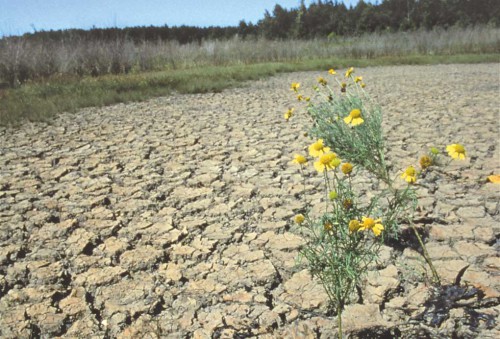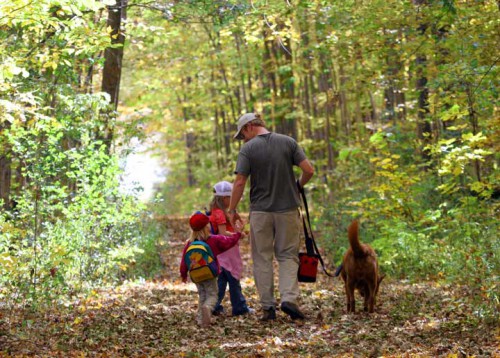MANITOULIN—“This has just been a terrible year,” is how Gordon Township farmer Morris Hore summed up the summer season.
Dry weather conditions has caused trouble for farmers across the Island, with water holes drying up, an increase in bugs and a less-than-average hay crop, to name just a few of the related headaches.
In the case of Mr. Hore, this summer has culminated in the early sale of all 90 of his beef cows. “The pasture all dried up and the water holes too,” he lamented, explaining that it was far too expensive for him to haul water to his herd. The only option left was to sell.
“I have sales for hay, which will keep me through the winter,” Mr. Hore added. “But I won’t bother having cattle until the spring. I grew a little bit of grain, but that’s been spoken for too.”
The Gordon Township farmer said this isn’t the worst year he’s encountered in terms of dry conditions, “but it’s definitely bad. This area here just didn’t get any water.”
Jim Gilpin of Spring Bay, beef cattle farmer and proprietor of Gilpin Farm Services, said the conditions are “pretty serious right now.”
“I’m seeding half of what I normally do, and others did too,” Mr. Gilpin said.
He noted that his first cut of hay was decent, but a second cut was out of the question.
“I normally don’t feed hay until November, but I’ve started to supplement the cows on pasture now,” he explained.
“I just hope it will rain,” Mr. Gilpin added, noting that he will have enough reserve hay to see him through the winter months. The dugout wells near the rear of his property have dried up too, he said.
Mr. Gilpin said he normally grows some grain, but didn’t this year, which is “just as well.”
Just as Mr. Hore had to sell his cattle early, Mr. Gilpin wondered if this might mean that fewer cattle will be bought too.
This thought has also crossed the mind of Tehkummah farmer Mike Brown. He said he’s heard that farmers from southern Ontario have been crossing the ferry to buy hay “for big bucks” as the weather has affected those in the south as well.
“With it being so dry, the bugs have been awfully bad and now the grasshoppers are everywhere,” Mr. Brown said. “I’m hauling water now too. Our pasture fields sound like eggshells when you’re walking.”
The Highway 6 farmer said hauling water to his herd of 30 twice a day is bad enough and can’t imagine what it must be like for those with large operations. Mr. Brown said his cattle are going to great lengths to find water, even hopping fences.
Like the other farmers with whom The Expositor spoke, Mr. Brown also got a first cut of hay, but wasn’t holding his breath for a second. “I’ve got six inches of re-growth—there should be two feet for this time of year. If you do cut, you won’t have growth next year.”
“I think I’ll be okay for the winter, I’ve got reserve bales at the back of the barn,” Mr. Brown said. “I always remember my father’s advice from living through the dirty ‘30s to have plenty of reserve hay. I have 300 bales saved from last year.”
He explained that he does have some crops this year, including grain mixed with peas to sell to the hunters this fall. Deer love this mixture, apparently, and have already been flocking to his pasture as their food source has dried up too.
“I’ve been growing horse hay too,” he added. “I did my research and talked to older farmers and they say it’s the best they’ve had in years.”
These crops have been attracting sandhill cranes and geese. “I figure you plant some for the deer, some for the cranes, some for the geese and some for me.”
Mr. Brown said he hopes prices for cattle won’t drop this fall if farmers rush to try and “dump their cattle” for fear of what the winter months will bring in terms of feed.
“If we don’t get rain soon, it won’t be good at all.”
Scott Runnalls of Barrie Island also said he won’t see a second cut of hay this year, but does have some water left on his pasture. “I’m checking all the time, and some of the holes are getting pretty muddy, but there’s still water. I’m not hauling water yet,” he said.
Mr. Runnalls has “a few hundred” head of cattle and did grow some grain this year for forage, which finished two weeks ago, he said.
The Barrie Island farmer said he also has reserve hay from last year, but isn’t accustomed to feeding in the fall, which he might have to do.
“I expected to have a bit of a cull anyway, but it could be worse,” Mr. Runnalls said. “I have yearling cattle to sell in September, and sell cull cattle later in the fall, but I may sell more than usual. It’s a good excuse to clean house.”
Mr. Runnalls added that he’s worried about depleting his reserves over the winter with the possibility of another dry summer next year on his mind.
The Ontario Ministry of Agriculture Food and Rural Affairs has launched a new link near the top of its webpage called ‘dry conditions and low water.’ On this page, titled adverse weather, farmers can find out information on agronomics, feed, pasture, forages, horticultural crops, heat stress in livestock and information on beef, swine and sheep herds as it pertains to the weather. Visit www.omafra.gov.on.ca/english/crops/weather/adverseweather.html.





